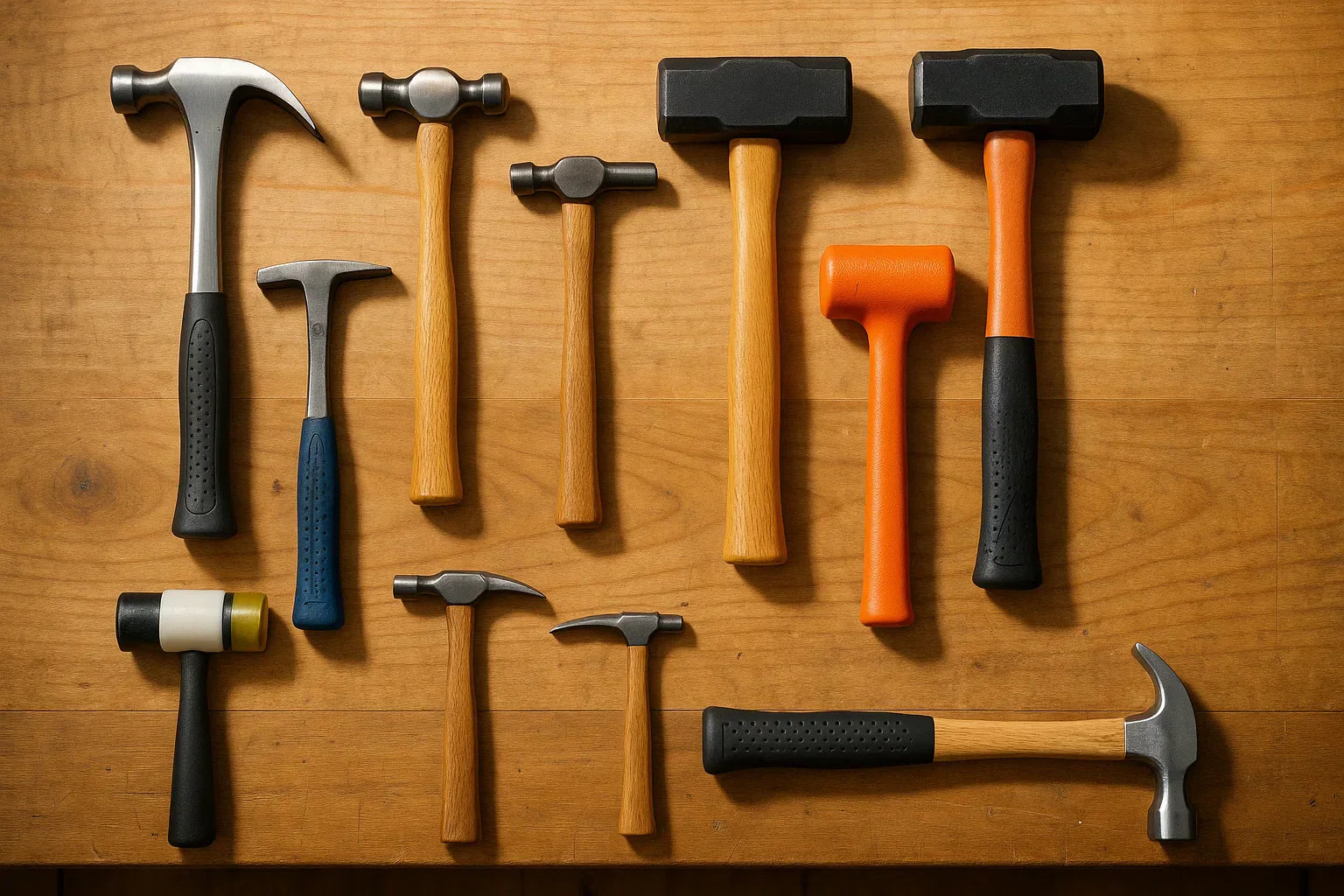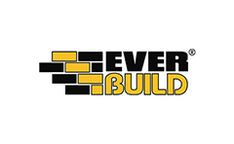The Different Types of Hammer, Explained
Whether you're hanging a picture frame, laying decking boards, or doing major renovations, having the right hammer makes all the difference. With so many different types of hammers available, choosing the right one can be confusing—especially for DIYers and first-time buyers.
In this guide, we’ll break down the different types of hammer and their uses, explain what makes each one unique, and help you pick the perfect hammer for your next project.
Why Do Different Hammers Exist?
Hammers are one of the oldest and most universal tools. But over the centuries, they’ve evolved into specialised designs for tasks like:
- Driving nails
- Shaping metal
- Breaking masonry
- Upholstering furniture
- Delicate woodworking
The shape of the head, the weight, the handle length, and even the materials used all influence what a hammer is good for.
11 Different Types of Hammer and What They’re Used For
01. Claw Hammer
- Common Use: Driving and removing nails in wood
- Description: The go-to hammer for general DIY. It features a flat face for striking and a curved claw for pulling out nails.
- Ideal For: Hanging shelves, fitting skirting boards, and home repairs
- Extra Tip: Choose between a curved claw (better leverage) or straight claw (for prying and demolition).

02. Ball Peen Hammer
- Common Use: Shaping and hardening metal
- Description: A machinist’s hammer with a flat striking face and a rounded “peen” for forming metal edges.
- Ideal For: Metal fabrication, rivet work, automotive tasks
- Extra Tip: The peen is used to “peen” (work-harden) metal or create rounded shapes without distortion.

03. Club Hammer (Lump Hammer)
- Common Use: Light demolition and chisel driving
- Description: A short-handled, heavy hammer with twin striking faces. Offers controlled force in tight spaces.
- Ideal For: Breaking blocks, striking masonry chisels, removing render
- Extra Tip: A great alternative to a sledgehammer for smaller, more precise demolition jobs.

04. Sledgehammer
- Common Use: Heavy-duty demolition
- Description: A long-handled hammer built for full-force blows. Typically used two-handed.
- Ideal For: Breaking concrete, landscaping, structural demolition
- Extra Tip: Available in a range of weights (6–14 lbs). Choose based on job size and user strength.

05. Brick Hammer
- Common Use: Cutting and shaping bricks
- Description: Combines a flat face with a chisel blade for scoring and splitting bricks cleanly.
- Ideal For: Bricklaying, patio installations, masonry repair
- Extra Tip: Score the brick with the blade side, then strike to split—it reduces waste and improves accuracy.

06. Cross Peen Hammer
- Common Use: Starting nails in tight spots
- Description: Features a narrow peen across the handle, useful for precision nailing and metalwork.
- Ideal For: Joinery, crafting, soft metal shaping
- Extra Tip: Perfect for working in corners where a standard hammer can't reach.

07. Dead Blow Hammer
- Common Use: Low-rebound striking
- Description: Filled with sand or shot to absorb impact and prevent bounce. Reduces risk of surface damage.
- Ideal For: Aligning parts, mechanical assembly, furniture joints
- Extra Tip: Prevents damage when force is needed but precision matters—great for woodworking and car repairs.

08. Rubber Mallet
- Common Use: Non-marking strikes
- Description: A soft rubber head delivers force without damaging the surface underneath.
- Ideal For: Flooring, tent peg driving, assembling flat-pack furniture
- Extra Tip: White rubber mallets are less likely to leave scuff marks than black ones.

09. Soft-Faced Hammer
- Common Use: Gentle but firm assembly
- Description: Has replaceable faces (rubber, nylon, copper) to suit the material you’re working with.
- Ideal For: Metalwork, joinery, engineered assemblies
- Extra Tip: Swap heads based on the job—use softer faces for painted or polished surfaces.

10. Upholstery Hammer (Tack Hammer)
- Common Use: Driving small tacks
- Description: Lightweight and often magnetised to hold tiny fasteners before striking.
- Ideal For: Reupholstering furniture, decorative tacking
- Extra Tip: Place the tack with the magnetised face, then flip and drive it home for better accuracy.

11. Framing Hammer
- Common Use: Large-scale timber construction
- Description: A heavy-duty claw hammer with a straight claw and milled face for improved nail grip.
- Ideal For: Deck building, timber framing, roof construction
- Extra Tip: Its extra weight and milled face let you drive large nails quickly and efficiently—great for outdoor builds.

How to Choose the Right Hammer
If you're building your toolkit or upgrading old tools, consider the following when choosing the right hammer:
1. Purpose
Ask yourself: What will I use it for most often?
- General home repairs? Go with a claw hammer.
- Working with metal? Opt for a ball peen or cross peen.
- Laying decking? A framing hammer can be ideal.
- Assembly or flooring? Use a rubber mallet.
2. Weight
Heavier hammers generate more force but can be tiring to use over time. For example:
- 8–16 oz – Good for light DIY and indoor use
- 16–20 oz – Balanced for general carpentry
- 3+ lbs – Best for demolition or masonry
3. Handle Material
- Wood: Classic feel but absorbs moisture
- Fibreglass: Strong, shock-absorbing, weather-resistant
- Steel: Durable but can transfer more vibration
4. Grip and Comfort
Look for a rubberised or anti-slip grip. If you'll be using it a lot, ergonomic handles make a difference.
Do You Need More Than One Hammer?
Absolutely—if you do a variety of DIY jobs. Here’s a simple starter setup for home use:
| Task | Recommended Hammer |
|---|---|
| Hanging pictures, fixing shelves | Claw Hammer |
| Flat-pack furniture, tent pegs | Rubber Mallet |
| Small chiselling or blockwork | Club Hammer |
| Outdoor timber framing | Framing Hammer |
| Metal tasks or DIY auto work | Ball Peen or Dead Blow Hammer |
Hammer Comparison Table
| Hammer Type | Best Use | Suitable For | Avoid Using On |
|---|---|---|---|
| Claw Hammer | Driving & removing nails | General carpentry, DIY tasks | Brick, stone, metal shaping |
| Ball Peen Hammer | Shaping & peening metal | Metalwork, mechanics | Woodwork, pulling nails |
| Club Hammer | Breaking & chiselling masonry | Blockwork, demolition | Fine woodworking |
| Sledgehammer | Heavy-duty demolition | Concrete, landscaping | Indoor DIY, precision tasks |
| Brick Hammer | Scoring & breaking bricks | Bricklaying, stonework | Metal or timber framing |
| Cross Peen Hammer | Driving nails into tight spaces | Joinery, metalwork | Masonry, demolition |
| Dead Blow Hammer | Precision without rebound | Automotive, engineering | Heavy striking tasks |
| Rubber Mallet | Non-damaging taps | Flat-pack furniture, flooring | Driving nails or chisels |
| Soft-Faced Hammer | Protecting surfaces | Assembly, fine metalwork | Rough demolition tasks |
| Upholstery Hammer | Placing tacks & small nails | Furniture, fabric work | Structural wood or masonry |
| Framing Hammer | Heavy-duty carpentry | Timber framing, decking | Fine or delicate tasks |
Hammer Safety Tips
- Always wear safety glasses when hammering
- Use the correct hammer for the job to avoid accidents
- Keep your hands clear of the striking zone
- Replace hammers with cracked handles or chipped heads
Final Thoughts: The Right Hammer Makes Every Job Easier
Now that you know the different types of hammer and their uses, you can shop smarter and work safer. Whether you're hammering nails, tapping joints together, or knocking down a brick wall, there's a tool designed to make your job easier.
Looking to build your toolkit? Check out our range of hammers, fixings, and building supplies at DIY Refurb – quality tools for every job, at budget-friendly prices.



















